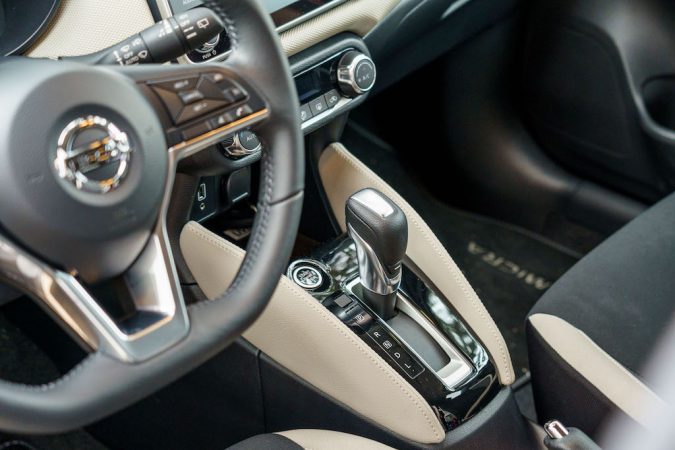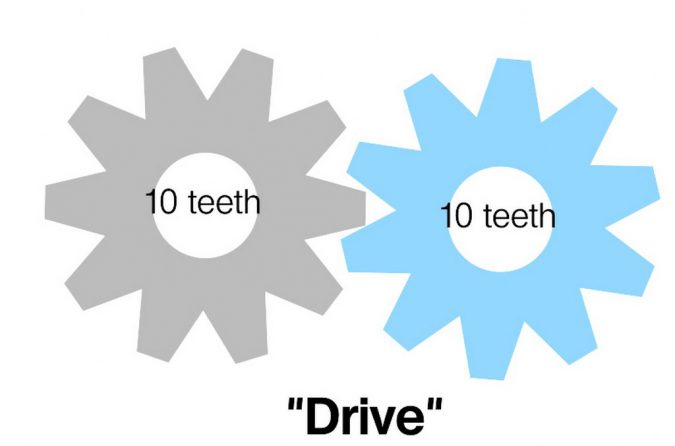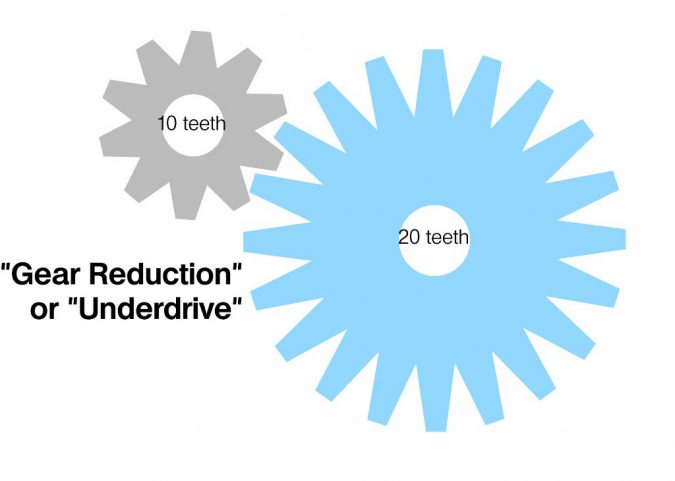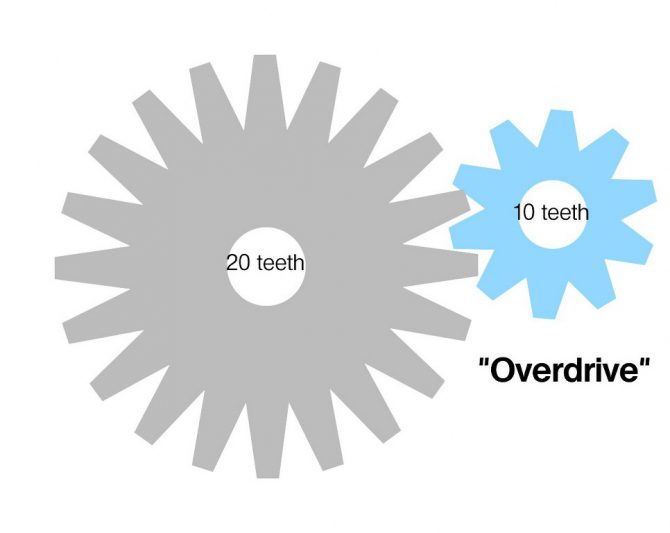how to use overdrive in a car
Have you ever looked at your gear shifter and wondered, ‘When is the right time to use overdrive?’The word itself – “overdrive” – might conjure up some false assumptions, ones that we should immediately put to rest. Overdrive isn’t a hyperspace button. It isn’t a NOS injection. It isn’t even an electronic engine mode to increase performance.Reading: how to use overdrive in a carOverdrive is nothing to do with the engine. It’s a transmission-based concept. Contrary to what some might say, it leads to decreased power to the wheels in exchange for better fuel economy, environmental-friendliness, and less engine noise.In this article, I’ll go through what overdrive is and why cars are fitted with it. With that in mind, we’ll then discuss why overdrive is best used on long, open roads and at high speeds.I hope your questions get answered here. If not, please leave a comment down below.
- What is overdrive?
- How to turn overdrive on
- When to use overdrive
- How does overdrive work?
What Is Overdrive?
Contents
The concept of overdrive – O/D – in a newer car is different from what it meant in vehicles from days gone by.It refers to any gear with a ratio of less than 1:1 (that is, for example, 0.8:1), meaning the engine is turning slower than the transmission output shaft. Because of this, you get better fuel economy.Nowadays, overdrive usually refers to the tallest gear in an automatic transmission.Most cars are built with the option to manually prevent the transmission from going into its highest gear. You can activate this feature by pushing the button on your gear selector.You engage the overdrive gear to get better gas mileage when traveling at high speeds. It enables the engine to turn at lower RPMs while maintaining the same wheel speed; your engine doesn’t need to do as much work to maintain the same wheel speed.When overdrive is active, your car is “over-geared”; theoretically, it can’t ever reach its natural top speed because of this. However, vehicles’ maximum speeds are almost always far and away above the speed limits on our roads, so this is absolutely nothing to worry about.As mentioned before, in today’s era, overdrive refers to something entirely different than from the 1950s to the 1970s.
How Do I Activate Overdrive?
Overdrive is permanently active. When you push the button, you’re actually turning it off.You usually deactivate it by pressing the O/D – “overdrive” – button on the gear shifter. It might be on the center console or an automatic column shifter. Either way, if your car has this feature, you’ll find a button somewhere on there.Once you’ve pushed it, a light will usually illuminate on the instrument panel: “O/D off”. If you were already in the overdrive gear, you’d feel the car shift into a lower gear as it activates, too, on most models.To turn it back on, you would simply follow the same process. Press the button again, and the overdrive will activate. When you do this, you might feel the car shift and the RPMs decrease while maintaining the same steady speed.In modern cars, turning overdrive on is the same as shifting up a gear. Likewise, turning it off is shifting down a gear.If you drive something older, the system is a bit different. I’ll look into that in more detail towards the end of this article if you’re interested.We’ll now think about when to use overdrive.
When To Use Overdrive In A Car
The best time to use overdrive is on long, flat, open roads, maintaining a relatively constant, high speed. That is, highway driving.You are more likely to want your overdrive on than off. Again, this is another situation where you shouldn’t believe everything you find on the internet. Many blogs encourage you to drive with O/D off most of the time. This isn’t the case. Especially in the newest cars, the transmission should be clever enough to know when to shift without your input 99% of the time.There are certainly a few situations where driving the overdrive turned off is more efficient and safer. We’ll explore those in the next section.To make sure overdrive is in use, check that the “O/D off” light is not illuminated. As long as it isn’t, your car will be using overdrive.
When To Not Use Overdrive In A Car
There aren’t too many situations where turning overdrive off is worth it.
- Driving up long, steep hills would be an example where you may want to turn it off.
- When you’re navigating a winding mountainside road or other such treacherous corners, you might want to turn overdrive off too, for better car control.
- You often need to turn overdrive off when hauling something. I’ll explain that in slightly more detail in the next section.
In the above situations, turning overdrive off increases safety and decreases the load on the car’s powertrain. Therefore, it’s important to remember to push the button.For your convenience, you may also want to turn overdrive off in the following circumstances.
- To overtake a car in front of you – this is essentially forcing the engine to “kick down”, dropping the gear and thereby increasing the revs, meaning you’ll have more power to speed up. You’ll still be able to overtake just fine with overdrive engaged, but turning it off forces the car to be slightly more responsive to your foot.
- For engine braking – when you’re traveling downhill or coming to a stop, it’s not just your brakes that slow the car down. It’s the engine too. If you’ve ever tried to bring a vehicle to a halt from speed when the transmission is in neutral, you’ll know the importance of engine braking. One of my biggest gripes is that some people will tell you that engine braking is terrible for your car. It’s not, but ignoring engine braking could be very dangerous. Turning off overdrive forces the transmission down a gear, increasing the revs and increasing the frictional force that causes engine braking.
When To Use Overdrive While Towing
When you’re towing something, it may be a different story altogether. It would be best if you always hauled with the overdrive off, checking for that “O/D off” light on the dashboard.Although this might not make sense at first, think of overdrive as most useful under light loads – cruising at highway speeds—nothing to worry about. When you’re towing something – especially something big – it’s a heavy load, and therefore overdrive should be off.Manufacturers and mechanics alike will all recommend for you to keep the overdrive off when towing. There may be some exceptions to this, as always, but I’d always advise following the instructions in the owners’ manual. That’s what the car was designed to handle, so reading it and following what it says is always the best bet.What Is The Tow/Haul Button?Some trucks (especially trucks) have a system referred to as “Tow/Haul” and might downshift on steep declines as well as maintaining proper engine and transmission speeds the rest of the time. You can find Tow/Haul in standard models such as the Ram 1500, the Toyota Tundra, and the Ford F-150.The Tow/Haul button is, with a couple of minor variations, broadly the same thing as an overdrive button. At least, it follows similar principles.What Is The Eco Button?In some vehicles, the overdrive system is named the “eco” system. It works in pretty much precisely the same way but is so-named to reassure you – the driver – of its fuel-saving abilities.Whether the system is called O/D, Tow/Haul, or Eco, if you need to accelerate quickly, the ECU will realize and temporarily shut it off, allowing you to accelerate.Read more: how to set radio stations in honda crvUsually, this depends on how hard you push the accelerator pedal.The video shown below walks you through this type of system on Honda vehicles.
How Does Overdrive Work?
Each manufacturer might choose to build “overdrive” into its cars differently. There’s no “one size fits all” when we come to this topic.To think about how overdrive works, I’ve divided it into two sections – the modern and the old. You might also think of these systems as the built-in and the aftermarket, respectively.
How Does Modern Overdrive Work?
Modern cars tend not to have any special, unique overdrive systems. It’s become more of a concept than a specific system.Instead, you’ll usually simply find a high gear, sometimes called a “tall gear”. Any gear with a ratio of less than 1:1 can be referred to as an overdrive gear.Gear ratios can be categorized in the following ways.
- Underdrive – gear ratio > 1:1 (for example, 2:1).
- Drive – gear ratio = 1:1.
- Overdrive – gear ratio < 1:1 (for example, 0.8:1).
In a 5-speed gearbox, 4th is typically 1:1 and 5th less than 1:1.Modern cars often have 8, 9, 10, or even 11 gears. In a transmission with ten gears, 7th and above will typically be overdrive gears.The greater the number of gears, the greater the likelihood that one of the ratios is appropriate for whatever driving situation you find yourself in.Overdrive systems in these cars vary in terms of setup. Still, almost all will be electronically controlled, simply locking out the highest gear(s) and often changing the shifting patterns too.
How Did Overdrive Systems In The Past Work?
In many cars, in particular older models from the 50s, 60s, and 70s, you’ll find an “overdrive” option. They were available in the US, starting in the 30s on manual, rear-wheel-drive cars.Overdrive systems worked differently in the semi-distant past. You might see one on a classic car (typically the 1970s and before).Cars from this period and before seldom had more than 3 or 4 gears, and almost all were rear-wheel-drive. The top gear, whether 3rd or 4th, would have had a ratio of 1:1. This ratio is no real cause for concern during city driving, but when it comes to open roads, it’s suddenly relatively inefficient.(You may be well aware of the fact that classic cars often have fuel economy that’s, shall we say, meh.)To get over this problem, manufacturers began fitting cars with bolt-on aftermarket overdrive systems.In the next section, we’ll consider why manufacturers didn’t just redesign the transmission to incorporate taller gears.The overdrive was an additional gearing unit that the manufacturers (or aftermarket auto shops) bolted onto the transmission before the prop shaft.The system worked in a very similar way to a standard automatic transmission, involving sun gears, planetary gears, and ring gears.When O/D is off, the sun gear turns, causing the ring gear to turn at the same rate. Activating overdrive, however, locks the sun gear in place, and the planetary gears now transmit the power through the ring gear.The planetary gears have more teeth than the sun gear, causing an increase in gearing – an “overdrive”.
Why Didn’t Manufacturers Add Another Gear Instead Of Overdrive?
To redesign a transmission is expensive and time-consuming. Very expensive and very time-consuming.Consider that it wasn’t just a case of adding an extra gear and “there we go, job’s a good ‘un.” Manufacturers will have already had a pre-existing fleet of cars, many of which would still be in production, many of which would utilize the same transmission as others.
When Was Overdrive Invented?
The US and Europe very much went their separate ways when the original overdrive systems were being invented.In North America, most cars had rear-wheel-drive setups coupled with manual transmissions. As early as the 1930s, you could fit these aftermarket overdrive boxes. The use of aftermarket overdrives peaked in the 1950s.In Europe, Laycock Engineering (later called GKN Laycock) supplied almost all overdrive systems, a company based in Sheffield, England. Over 40 years, they provided over 3.5 million units to automotive manufacturers. The first was fitted to a production car in 1948 – the Standard Vanguard Saloon.Almost every vehicle released in the US since 1981 has featured some sort of overdrive system to increase fuel economy.
What Do The Gear Ratios Mean?
Here are a few diagrams to help you grasp the concept of gear ratios.The gears colored gray should be thought of as the input speed from the engine. The blue gears represent the output from the transmission.


How Much Better Mileage Will I Get With Overdrive Active?
All of the points in this article ultimately boil down to this one – how much of a benefit does overdrive provide in terms of fuel economy.Over the last 50 or 60 years, the concept of overdrive has been arguably one of the most significant advances in terms of fuel economy. Valve timing, tires, aerodynamics, EGR systems, electronically-controlled fuel injection, better oils, filters, and fuels have all played their parts.Of all these systems, overdrive is – in a sense – the simplest. It’s simply an extra gear, and you might argue that technology would have headed this way in any case.So, how much do you save on gas when you’ve got overdrive on?While I can’t find an exact number for you (it’ll depend wildly on your make and model, too), overdrive gears might reduce engine speed by between 10% and 50%.In theory (and only in theory), that means savings between these percentages in fuel costs. In real life, it’s not quite that much due to factors like your speed, how much more stop/start driving you do, and how much you accelerate or decelerate on your trip.Still, you’ll be using much less fuel when overdrive is engaged.
How Efficient Are Cars These Days?
This official report (follow the link if you like) details changes in the automotive industry between 2014 and 2019, following the 14 biggest US car companies. These are (in order of average mpg across their fleets in 2019):
The average mpg across these industries was 24.9, up from 24.1 in 2014. That’s not a vast improvement, but it’s a slight one nonetheless.However, compare this to 1973, the worst year on record for fuel economy, where the US’s average motor vehicle managed just 10.9 mpg.Fuel economy still isn’t that great in the US, but it’s steadily improving. Overdrive systems are one of the main reasons for this increase.
What Does The “O/D Off” Light Mean?
If you’ve read through this article, you’ll probably be familiar with the “O/D off” light and what it means.However, to confirm, “O/D” is shorthand for “overdrive”. When you read the words “O/D off”, it means that your car’s overdrive system is currently switched off.In its present state, the transmission will use overdrive automatically. When you push the O/D button on your gear shifter, it turns the overdrive off, and the “O/D off” light pops up on your instrument cluster.
When To Use Overdrive – Conclusion
In conclusion, you should use overdrive most of the time. Your car has been built that way and therefore will be most effective if that’s how you operate it.The O/D button on your gear shifter is for turning overdrive off, leading to that little “O/D off” light showing on your instrument cluster. When this happens, it means (in modern cars) that your transmission will prevent itself from going into the highest gear (or gears, depending on the system).Overall, it would be best if you were thinking more along the lines of when not to use overdrive instead of when to use it. As mentioned before, the situations where you might want to turn O/D off would be:
- when you want to force the car to accelerate suddenly and quickly, such as when overtaking,
- if you need to use engine braking,
- when you’re driving on narrow, hillside roads,
- when you’re driving up a particularly steep hill,
- or when you’re towing something.
Most of the time, modern systems are advanced enough to be able to handle these situations. However, for peace of mind, you may want to turn the overdrive off.If you’re in any doubt, check your owner’s manual. Nine times out of ten, you’ll find the answer in there.I hope you’ve found this article interesting.Feel free to leave a comment down below, and thanks for reading.The featured image at the top of this article was edited by Thomas Dawe Photography.These tools have been tried and tested by our team, they are ideal for fixing your car at home.Read more: how to clean a cork yoga mat
Last, Wallx.net sent you details about the topic “how to use overdrive in a car❤️️”.Hope with useful information that the article “how to use overdrive in a car” It will help readers to be more interested in “how to use overdrive in a car [ ❤️️❤️️ ]”.
Posts “how to use overdrive in a car” posted by on 2021-10-20 20:13:10. Thank you for reading the article at wallx.net





